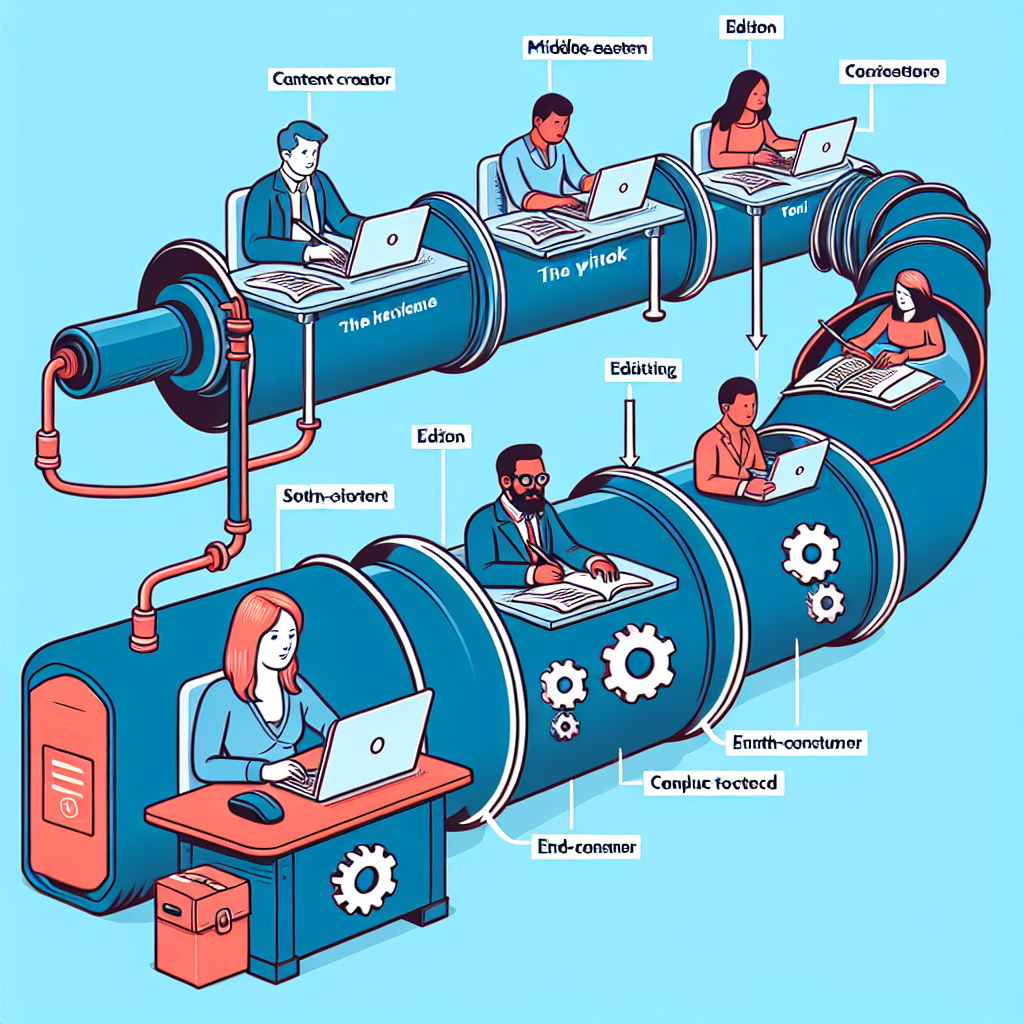Content has emerged as a critical asset for establishing authority, trust, and engagement. With advancements in artificial intelligence (AI), business owners now have a unique opportunity to leverage collaborative AI content generation—an auxiliary tool that blends human creativity with machine learning to create impactful content at scale. This article explores the significance of collaborative AI content generation, practical applications, and actionable strategies to harness it for business success.
What is Collaborative AI Content Generation?
Collaborative AI content generation involves the integration of human insight with the computational power of AI to produce high-quality, relevant, and engaging content. It acts as an auxiliary tool, enhancing the creative process rather than replacing it. By utilizing AI-driven technologies, such as OpenAI’s GPT-3, businesses can streamline their content creation process, maintain a consistent voice, and optimize their messaging across various platforms.
Understanding the synergy between human expertise and AI can be a game-changer for businesses looking to boost their digital presence and engagement. AI-driven content tools are becoming increasingly integral across industries, from marketing to customer service, enabling organizations to scale content production without sacrificing quality.
Key Benefits of Collaborative AI Content Generation
- Amplified Content Production:
One of the most valuable aspects of collaborative AI content generation is the sheer volume of content it can help produce. AI tools allow businesses to generate everything from blogs and articles to social media posts and email campaigns, all while maintaining a consistent tone and style. By automating the content creation process, businesses can significantly increase their output without the need for additional resources. - Data-Driven Precision:
AI content generation tools offer the ability to analyze data in real-time, providing businesses with insights into their audience’s behavior, preferences, and search habits. This capability allows for highly targeted and personalized content, ensuring that what you create resonates with your audience. AI can suggest relevant topics, identify high-traffic keywords, and predict future trends, helping businesses stay ahead of the curve. - Efficiency and Time Savings:
AI’s ability to automate repetitive and time-consuming tasks is one of its most significant advantages. By freeing up your team from mundane tasks, such as keyword research, content scheduling, and even first-draft writing, they can focus on higher-level strategies and creativity. The result is a more streamlined content production process, maximizing output and reducing turnaround times. - Enhanced SEO Performance:
Search engine optimization (SEO) is critical for content visibility. AI tools excel at analyzing search trends and optimizing content to rank higher in search results. Tools like SEMrush, combined with AI-driven insights, can help businesses pinpoint the right keywords, suggest improvements, and ensure that their content is aligned with the latest SEO best practices. The result? A greater likelihood of ranking higher in search engines and driving organic traffic.
The Evolution of AI Content Generation
AI content generation is built on decades of advancements in natural language processing (NLP) and neural networks. The breakthrough of algorithms like GPT-3 has enabled AI to mimic human-like writing styles more convincingly than ever before. This evolution has fueled the adoption of AI content generators in diverse fields, and while early iterations raised concerns about authenticity, today’s tools are highly sophisticated and versatile.
Modern AI tools can now assist in creating various content types—blogs, technical articles, ad copy, social media posts, and more. By understanding the context and intent behind a given prompt, these tools can deliver results that are not only accurate but also contextually relevant.
Despite ethical debates about the authenticity of AI-generated content, the technology has evolved to address many concerns, particularly around plagiarism and transparency. By positioning AI as a collaborative tool rather than a full replacement, businesses can reap the benefits of efficiency without compromising their values.
Practical Applications of Collaborative AI Content Generation
The practical applications of collaborative AI content generation are vast, and they span across numerous industries. Here’s a look at some key areas where AI can be integrated as an auxiliary tool:
- Marketing Campaigns:
AI can help design, execute, and optimize marketing campaigns by generating data-driven ads, social media posts, and email newsletters. These AI-generated assets can be tailored to specific audiences, ensuring higher engagement rates and better ROI. - Personalized Content:
Personalization is essential for delivering an exceptional user experience. AI can analyze individual user data and create customized content based on their preferences, past interactions, and browsing behavior. This level of personalization can significantly improve user engagement, brand loyalty, and customer retention. - SEO Optimization:
AI can quickly identify the most effective keywords and content strategies for improving search engine rankings. By analyzing current search trends, competitor performance, and keyword relevance, AI tools can optimize content to meet the ever-changing requirements of search engines like Google. - Content Curation:
In addition to generating content, AI can also help businesses curate relevant content for blogs, newsletters, or social media. This curation process saves time while ensuring that the most pertinent and engaging content is shared with your audience.
Best Practices for Implementing Collaborative AI in Content Strategy
To fully leverage the potential of collaborative AI content generation, businesses should adopt a strategic approach. Here are some best practices for integrating AI into your content workflow:
- Balance Human Creativity with AI Automation:
AI is best used as a complementary tool, not a replacement for human creativity. Use AI to handle repetitive tasks like research, SEO optimization, and content drafts, but always have a human editor review and refine the content for authenticity, tone, and style. - Integrate AI Across Multiple Channels:
AI tools can be used to create content for various platforms, from websites and blogs to social media and email marketing. Make sure your AI strategy is comprehensive, ensuring that your content is consistent across all touchpoints. - Monitor Performance and Adapt:
AI-generated content should be regularly monitored for performance metrics such as engagement rates, SEO rankings, and conversion rates. Use these insights to refine your content strategy and ensure that your AI tools are delivering optimal results. - Ensure Ethical Use of AI:
As AI continues to play a larger role in content generation, businesses should remain transparent about its use. Maintaining ethical standards around AI-generated content, such as disclosing when content is created by AI, can foster trust with your audience.
The Future of AI in Content Creation
Collaborative AI content generation offers a compelling opportunity for businesses to scale their content strategy efficiently and effectively. By combining human creativity with AI’s data-driven insights, businesses can produce high-quality, optimized content that resonates with their audience. Whether used for marketing campaigns, SEO optimization, or personalized content, AI serves as a powerful tool to enhance your content production process.
As AI technology continues to evolve, its role in content creation will only expand. Businesses that stay informed about AI advancements and are quick to adopt these tools will gain a competitive edge, improving their ability to engage with their audience and achieve business success. The future of content creation is collaborative, and those who embrace AI will lead the way.
For continued learning, explore resources from industry leaders like HubSpot and Forbes, and engage with the growing online community discussing the latest trends and ethical considerations in AI content generation.









